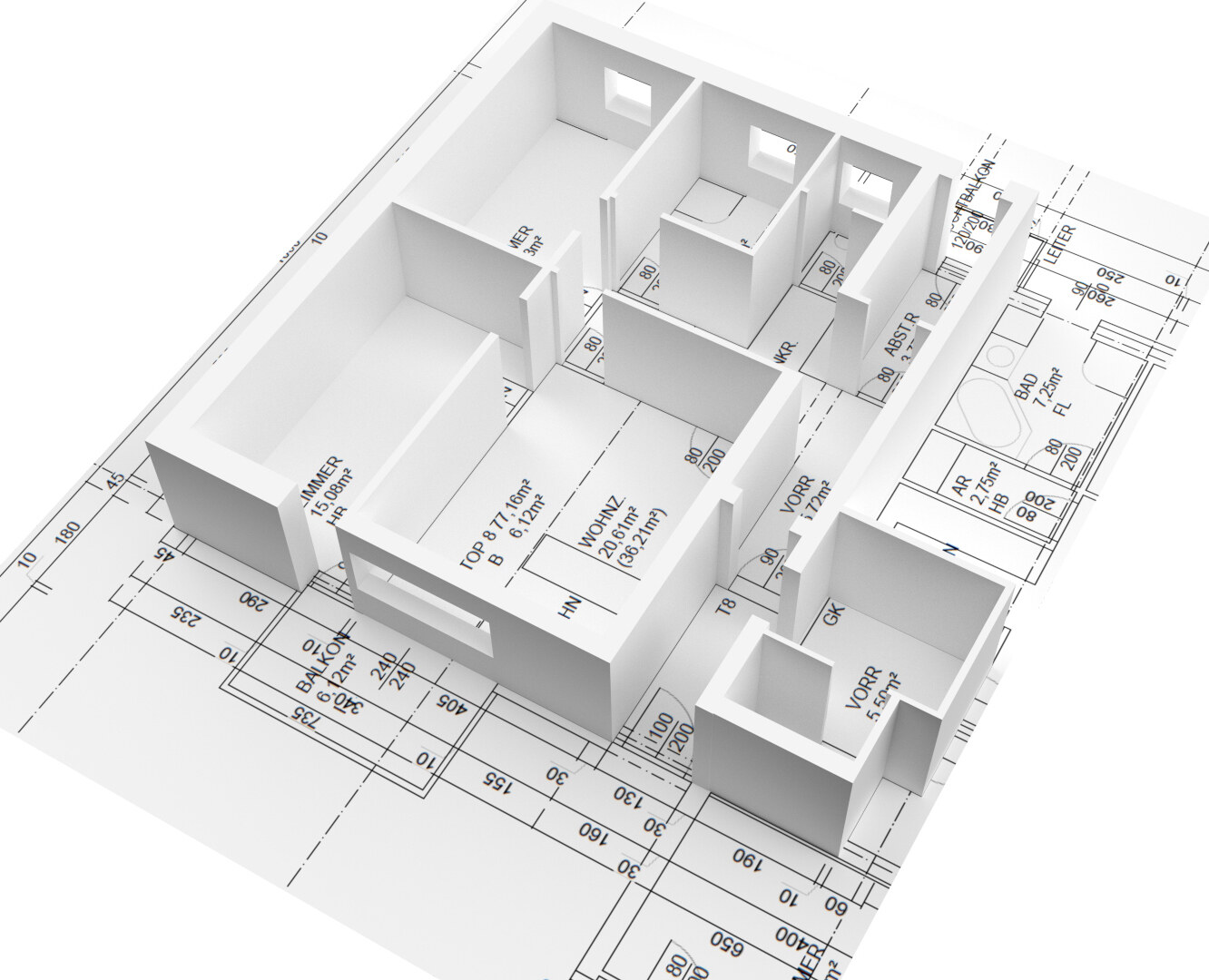Abstract
This project addresses the interactive virtual exploration of buildings. Virtual walkthroughs of property are becoming increasingly popular in the real estate sector. However, currently virtual walkthroughs are costly due to the labor intensive manual generation of virtual 3D content and walkthrough design, and thus, not applicable for brokerage of residential properties. A cost reduction to create 3D virtual walkthroughs and interior would change the entire business with residential properties. Especially for designed but not yet built properties, it is a key factor in financing to sell objects already in the development state. However, clients usually fail to imagine a virtually designed building using only state-of-the-art static 2D images or non-interactive 3D renderings. This often results in not purchasing the real estate object until the end of the construction process. For that reason, there is an enormous interest, especially of property developers, to be able to present a real estate object in a convincing and realistic manner at the earliest stage possible.
In this project we developed novel methods for automated geometry creation from the floorplan of a building and automatic interior design by furniture and material placement. Moreover, we investigated methods for immersive VR exploration and intuitive interaction. The methods investigated in this project enable the automated generation of VR walkthroughs from the floorplan of a building with minimal user intervention within only a few minutes. Additionally, the developed methods enable a reconfiguration of interior design in real-time. We implemented our methods in Unreal Engine 4 which enables the generated virtual walkthroughs to feature high-quality rendering, dynamic lighting (for variable daytime simulation), real walking, and advanced interaction to provide immersive and outstanding user experience. This project also addresses open topics in state-of-the-art virtual exploration and interaction with generated 3D environments.
Based on the results of this research project, it is possible to develop a market ready solution by our partner company to provide realistic, user-centered and interactive visualizations of residential real estate objects. With our methodological approach, it is possible to tremendously reduce the costs for 3D content creation by using a novel automated 3D extrusion process based on commonly used 2D blue prints. Other application scenarios of our proposed solution are detached and semi-detached houses. Here, our novel technology can replace the very cost-intensive sample houses by providing a virtual house walkthrough. Furthermore, we expect our technology to be beneficial for architects and development planners.
In addition to the main focus of our research on indoor spaces and interior design, the results of this project can be beneficial for many areas which require automated generation of 3D digital content, including training, education, rehabilitation, architectural visualization, psychological studies, simulation, in the entertainment industry, and other fields.
The results of this project demonstrate the capability of our system to automatically generate furnished virtual environments from the floorplan of the building. We implemented our methods in Unreal Engine 4 which allows to instantly explore the generated 3D environment in virtual reality. The following image shows one flat fully reconstructed and furnished by our methods.

We evaluated our method using various floorplans of existing buildings. The following image demonstrate our results for three selected rooms from these floorplans.

Moreover, the implementation of our methods in Unreal Engine enables the artists to easily modify the generated virtual environment in Unreal Editor. The user interface of Unreal Editor with a generated room is shown in the following image.

Finally, the following video demonstrates the optimization process of furniture arrangement to reach the sensible interior design which conforms to interior design guidelines. Additionally, the real-time walkthroughs in the generated rooms are demonstrated.
The second method for automatic furniture design, based on greedy cost minimization, is one order of magnitude faster than previous method. Additionally, we enhance this method by procedural decoration step which improves the user preferences. The results of this method, together with interactive VR exploration of fully furnished large-scale interior, can be seen in the following video.
Funding provided by
- FFG - Österr. Forschungsförderungs- gesellschaft mbH

